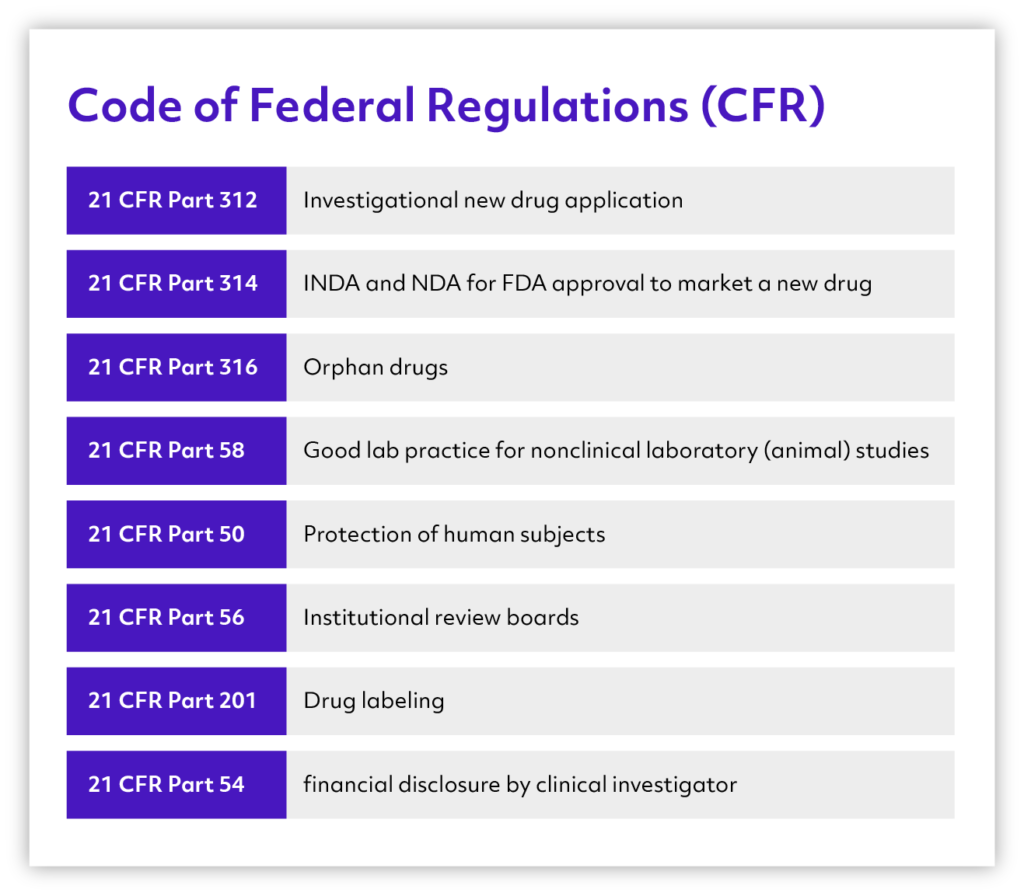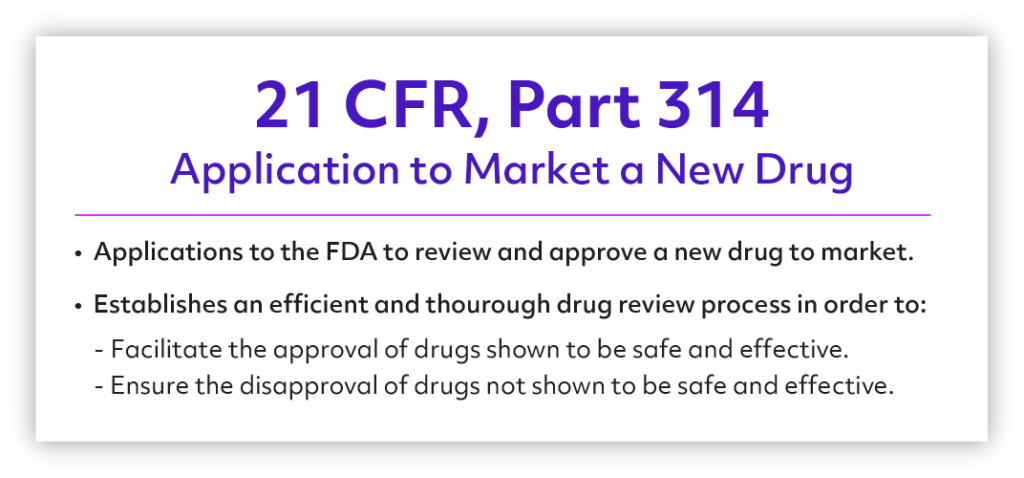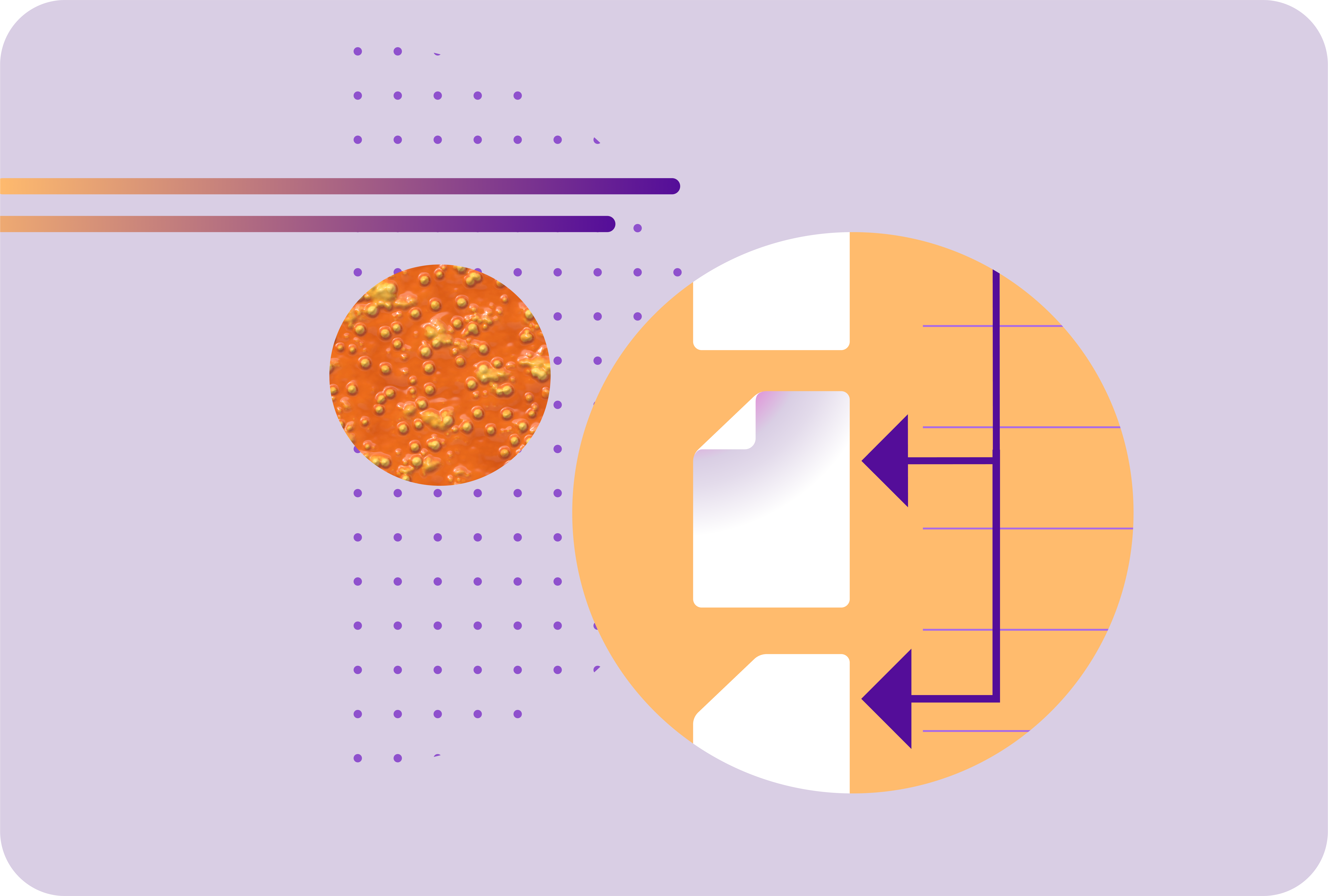
If you’ve developed a new pharmaceutical and want to market it to health care providers or the general public, you must take one first, unskippable step: you need to get it approved by the Food and Drug Administration. FDA regulations govern what you can claim about your product and whether you can even sell it at all. For companies that manufacture drugs, biotechnology, and related products, demonstrating the safety and effectiveness of your goods to the FDA’s satisfaction has to be a top priority.
Gaining FDA approval can be challenging, but it is also methodical with clearly delineated steps. Many critical aspects of the approval process are spelled out in Title 21, Part 314 of the Code of Federal Regulations, Applications for FDA Approval to Market a New Drug. Compliance with this regulation ensures that you’re following the correct path to approval and not skipping any of the required actions.
In this post, we’ll learn more about why and how the FDA regulates pharmaceuticals, and how the approval process works. You’ll also find a free download for a 21 CFR Part 314 Checklist to help you stay on course while navigating your way through all of the necessary steps for approval.
What is the FDA’s role in regulating pharmaceuticals?
The origins of the FDA lie in the Pure Food and Drugs Act of 1906, although the agency tasked with upholding that law would not receive its current name until 1930. According to the FDA’s mission statement, its role is to protect public health by ensuring that food, drugs, cosmetics, biotechnology, and medical devices are safe to use and effective at providing any claimed health benefits.
The FDA provides scientifically accurate information to the public and carefully evaluates all new drugs and medical products before allowing them to go on the market. They also continue to monitor products after they’ve been approved, collecting reports on adverse reactions and other safety issues. This process protects consumers from the harm that can come from unproven remedies, drugs with harmful side effects, and other unregulated products.

What is the process for FDA drug approval?
The approval of new drugs is handled by the Center for Drug Evaluation and Research (CDER), a division of the FDA under the Office of Medical Products and Tobacco. Pharmaceutical manufacturers must take the initiative to begin developing their products in a way that anticipates compliance with the guidelines they will be required to follow once they formally seek approval.
Here is a broad outline of the steps involved in the process:
- The manufacturer develops a new drug and tests it on animal subjects.
- If all goes well, the manufacturer develops a drug prototype for human use.
- The manufacturer submits an Investigational New Drug (IND) application to the FDA, requesting to test the drug in clinical trials on human subjects.
- Three phases of clinical trials are carried out, using increasingly larger numbers of testing subjects.
- The manufacturer analyzes the data from the clinical trials and submits it to the FDA with a New Drug Application (NDA).
- The FDA reviews the application with an eye toward the following criteria:
- The safety of the effectiveness of the drug.
- The accuracy of the drug’s proposed labeling.
- Whether or not the drug is being manufactured in a way that ensures quality, purity, and consistency.
- The FDA decides whether or not to approve the drug.
- If the drug is approved, the manufacturer can start selling it, but the FDA will continue to monitor its production, distribution, and use.
Each of these steps is subject to detailed regulations. Manufacturers must follow them all correctly to keep the approval process on track.
What is 21 CFR Part 314?
The Code of Federal Regulations codifies all of the laws and regulations enacted and enforced by the United States federal government. Title 21 is the section covering food and drugs. Pharmaceutical and medical device manufacturers should be well familiar with this code. One that is very common to all aspects of the life sciences industry is 21 CFR Part 11, which deals with securely maintaining digital signatures and other electronic records.

The FDA is in charge of regulating Title 21. Part 314 covers the rules and requirements for how manufacturers must submit new drug applications (NDAs) and how the FDA should review them. The purpose of the Part 414 regulations is to get safe and effective drugs approved and put to market quickly while identifying unsafe and ineffective drugs and preventing their distribution.
What is FDA approval, and what does it mean?
FDA approval is required for prescription drugs and other medicines. Though they may be safe to use, over-the-counter drugs and supplements cannot make specific health benefit claims that have not been vetted and approved by the FDA.
When a company submits an IND application, it is reviewed by scientists at the CDER. They evaluate the data and the company’s claims about what the drug does. The FDA does not conduct drug trials themselves but requires the manufacturer to do it, following 21 CFR Part 314.
If the reviewers determine that the data proves the drug is safe and effective, and that the benefits outweigh the potential risks, they will grant FDA approval. Then the company can put the drug to market with its proposed labeling. The FDA will continue to monitor it and may require changes in labeling or even withdrawal from the market if new information surfaces.
How to Use the Checklist
The free checklist includes all of the regulations in 21 CFR Part 314 that new drug applicants must be aware of and follow.
By following the checklist and marking off items as you go, you can ensure that your application stays compliant with 21 CFR Part 314. It will help you keep preventable mistakes from delaying or derailing your approval process.
Some checklist items pertain to post-approval reporting and other activities that may not be relevant now but may be required later. These items should be noted and revisited at the appropriate time.
A Roadmap for FDA Approval
Pharmaceutical innovations can make lives immeasurably better, but it takes a rigorous and careful process to shake all the hidden risks out of any new drug. Serving as a roadmap for the FDA approval process, 21 CFR Part 314 is a vitally important set of regulations for drug manufacturers. Staying in compliance with all relevant sections of the regulation is the safest and surest path to getting FDA approval.
As a quick scan of the downloadable checklist will confirm, there are many required actions and reporting obligations in 21 CFR Part 314. Moving successfully through the intricate new drug approval process is easier with the help of a powerful QMS that can manage all of the necessary documentation and data, keeping it updated and secure. It allows you to stay on track and fix your focus on the higher-level challenges of bringing your product to market successfully.



